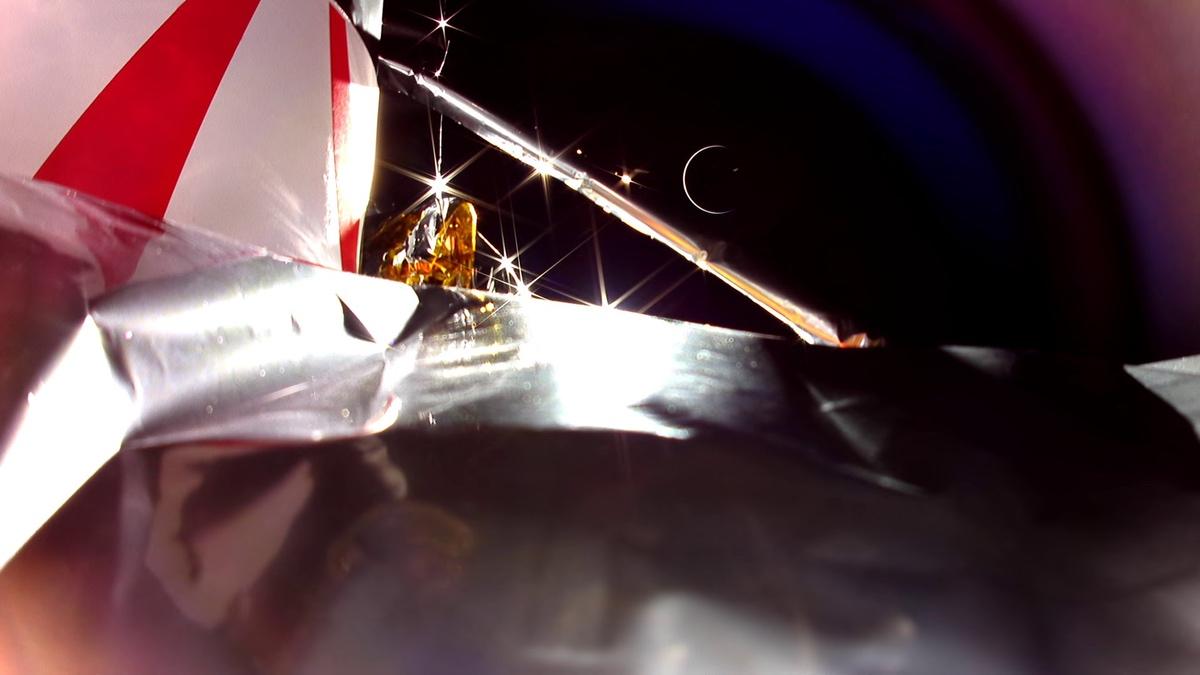Peregrine launched Jan. 8 on the first flight of United Launch Alliance’s Vulcan Centaur.
The spacecraft, though, suffered a propellant leak hours after launch that ruled out any chance of attempting a lunar landing.
The spacecraft instead reentered a week and a half after launch.
Although Peregrine did not reach the moon, many of the payloads on board were tested during the flight.
“In transit, we were going to keep most of those payloads in a survival mode,” said Dan Hendrickson, vice president of Astrobotic, during a March 11 session about the mission at the Lunar and Planetary Sciences Conference here.
“But as our mission deviated, the plan deviated as well, much to the benefit of all the payloads.”While many of the science payloads on Peregrine weren’t able to collect their intended data from the surface of the moon, they were able to be tested in space and, in some cases, perform some science.
Among them was the Linear Energy Transfer Spectrometer (LETS) instrument, which collected data about the cislunar radiation environment rather than on the lunar surface as intended.
“We had to move our operations around to pull data down during the flight,” said Stuart George of NASA’s Johnson Space Center, one of the leaders of the instrument.
“The instrument worked perfectly the whole time.”Another NASA instrument, the Peregrine Ion-Trap Mass Spectrometer (PITMS), also was able to operate during the flight.
It detected traces of nitric oxide and nitrogen dioxide that likely was from the lander’s oxidizer that suffered the leak.
“That transient atmosphere, if you will, of the oxidizer around the spacecraft, that self-induced environment, persisted,” said Barbara Cohen, principal investigator for PITMS at NASA’s Goddard Space Flight Center.
One of the non-NASA payloads on Peregrine was Iris, a lunar rover built by students at Carnegie Mellon University.
“We became a ‘RoverSat’ instead,” said Raewyn Duvall, program manager for Iris.
That included testing out many of the rover’s subsystems and even turning some of its wheels to confirm they worked.
“Everything that we were allowed to test worked.”Astrobotic is currently reviewing the Peregrine mission to determine the root cause of the propellant leak and any changes that might be needed for the company’s larger Griffin lander, which is under development to launch NASA’s Volatiles Investigating Polar Exploration Rover (VIPER) mission.
Hendrickson said after the presentation that the investigation was going well but did not offer a schedule for completing it.
NASA is following that investigation, said Joel Kearns, deputy associate administrator for exploration in NASA’s Science Mission Directorate, during a NASA town hall at the conference March 11.
“Once we have the results of that, NASA will determine what actions we’re going to take in the future,” he said, including any specific changes for VIPER.
“We will look at their failure review board findings and determine what steps we need to take for VIPER.”Griffin and VIPER were set to launch as soon as this November, but Kearns, speaking at a Planetary Science Advisory Committee meeting March 5, said that will likely slip.
“It is extremely unlikely they will fly before the end of this year,” he said, because of not just the Peregrine investigation but also other work to prepare the rover and lander for launch.
He said NASA would wait to set a new date until after the Peregrine investigation is complete.
THE WOODLANDS, Texas — NASA and other payload operators aboard Astrobotic’s Peregrine lunar lander claim that they obtained valuable data from the mission even though they were unable to reach the moon.
Peregrine sent Jan. 8 on the inaugural launch of United Launch Alliance’s Vulcan Centaur. However, hours after launch, the spacecraft experienced a propellant leak, which eliminated any possibility of trying to make a moon landing. A week and a half after launch, the spacecraft instead made a second entry.
Many of the onboard payloads were tested during the flight, despite Peregrine’s failure to reach the moon. Vice president of Astrobotic Dan Hendrickson stated, “We were going to keep most of those payloads in a survival mode during transit,” during a discussion about the mission on March 11 at this location’s Lunar and Planetary Sciences Conference. But the plan also changed as our mission did, and all the payloads benefited greatly from this. “.
Many of the Peregrine’s science payloads were tested in space and, in certain cases, even conducted science, even though they were unable to gather the desired data from the moon’s surface.
One of them, the Linear Energy Transfer Spectrometer (LETS) instrument, was designed to gather data on the lunar surface, but instead it collected data about the cislunar radiation environment. One of the instrument’s leaders, Stuart George of NASA’s Johnson Space Center, said, “We had to move our operations around to pull data down during the flight.”. “The instrument operated flawlessly the entire time. “.
The Peregrine Ion-Trap Mass Spectrometer (PITMS), another NASA instrument, was also functional during the flight. It found nitrogen dioxide and nitric oxide residues, which were probably from the lander’s oxidizer leak. Principal Investigator for PITMS at NASA’s Goddard Space Flight Center Barbara Cohen said, “That transient atmosphere, if you will, of the oxidizer around the spacecraft, that self-induced environment, persisted.”.
Iris, a lunar rover constructed by Carnegie Mellon University students, was one of the non-NASA payloads carried on Peregrine. Iris program manager Raewyn Duvall stated, “Instead, we evolved into a ‘RoverSat.'”. This involved putting many of the rover’s subsystems to the test and even rotating a few of its wheels to make sure they were functional. “Everything we were able to test performed as expected. “.
In order to identify the primary cause of the propellant leak and make any necessary modifications for the company’s larger Griffin lander—which is being developed in preparation for the launch of NASA’s Volatiles Investigating Polar Exploration Rover (VIPER) mission—Astrobotic is currently analyzing the Peregrine mission. Following the presentation, Hendrickson stated that the investigation was proceeding smoothly but did not provide a timeline for its conclusion.
Joel Kearns, deputy associate administrator for exploration in NASA’s Science Mission Directorate, stated during a NASA town hall at the conference on March 11 that NASA is monitoring that investigation. He stated that NASA will decide what steps to take moving forward, including any particular adjustments for VIPER, “once we have the results of that.”. “We’ll assess the recommendations made by their failure review board and decide on the next steps for VIPER. “.
Griffin and VIPER were scheduled to launch as early as November of this year, but Kearns predicted that would probably slip when he spoke on March 5 at a meeting of the Planetary Science Advisory Committee. He said, “It is highly unlikely they will fly before the end of this year,” citing the Peregrine investigation in addition to additional work needed to get the lander and rover ready for launch. He declared that NASA would not announce a new date until the Peregrine probe was finished.




